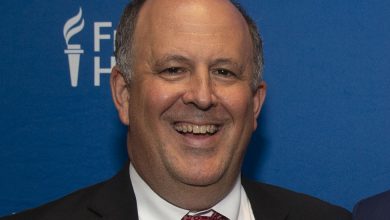Wage Growth Slowed in Second Quarter, a Sign the Economy is Cooling

Wage growth slowed this spring, the latest sign that the Federal Reserve might be succeeding in its effort to engineer a “soft landing” for the U.S. economy.
Overall compensation costs, including both pay and benefits, rose 1 percent in the second quarter, down from 1.2 percent in the first three months of the year, the Labor Department said Friday. Compensation was up 4.5 percent from a year earlier, the slowest growth in more than a year.
A narrower measure, which includes only wages and salaries of private-sector firms, also rose 1 percent, down from 1.2 percent in the first quarter.
Smaller pay increases might sound like bad news. But they will be welcomed by policymakers at the Fed, who have been worried that rapidly rising wages could make it harder to get inflation under control. They have been hoping trying to cool down the economy just enough that wage gains and price increases can slow without causing a significant increase in unemployment.
So far, that is exactly what is happening. Wage growth, by various measures, has softened in recent months, but inflation has fallen by even more. Workers are better off as a result: Pay, adjusted for inflation, rose in the second quarter for the first time in two years.
“Households are getting back some purchasing power,” said Beth Ann Bovino, chief economist for U.S. Bank.
Still, many economists argue wages are still rising too quickly for the Fed’s comfort, particularly in certain sectors such as leisure and hospitality. If compensation costs keep rising at their recent pace, companies are likely to keep raising prices — especially if consumers prove willing to keep spending anyway, as they have recently.
“At the end of the day, if the wage bill is rising at between 4 and 4.5 percent, it will be hard for the Fed to have confidence that services inflation will be consistent with their preferred outcome,” said Michael Gapen, chief U.S. economist for Bank of America.
The slowdown in wage growth has surprised some economists because the unemployment rate remains very low, which ordinarily would put pressure on companies to raise pay to attract and retain workers. But other evidence suggests that the labor market has softened even without a big increase in joblessness. Employers are posting fewer job openings, are adding fewer new jobs and are poaching fewer employees from competitors, all signs that demand for workers has slowed. At the same time, the supply of workers has increased, as immigration has picked up and more people are coming off the sidelines to join the labor force.
Employers in recent months have reported having an easier time finding workers. In a survey of businesses released this week by the National Association of Business Economists, a majority of respondents said wages at their firms were unchanged in the second quarter — the first time that has happened in 2021.
“Labor’s still a problem, the labor market’s still tight out there, but firms are starting to figure out how to make do with what they have,” Lester Jones, chief economist for the National Beer Wholesalers Association, said in a conference call held to discuss the survey. He added, “We see firms just being smarter with the employees that they have and just trying to be more efficient and not trying to chase employees the way we did coming out of Covid.”
Economists will get more information on the labor market next week, when the Labor Department releases data on job growth in July. That report will include a measure of earnings that is more timely than the data released on Friday, though it is generally considered less reliable.



